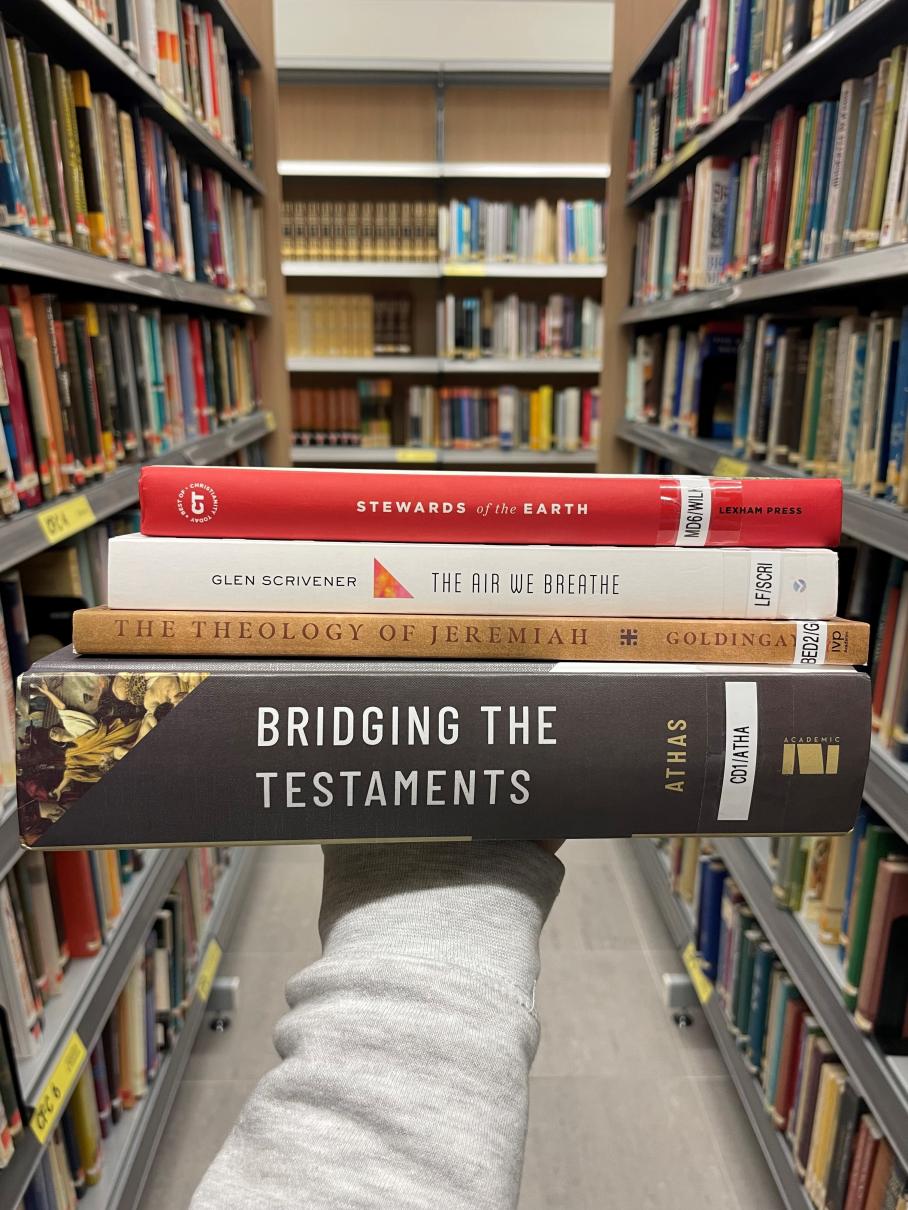New Library Books 2024

New Library Books 2024
by Claire McNabb
From time to time we share some books that have been added to our library. Sometimes they’re newly published and sometimes they’re just new to us. This week we have The Air We Breathe, Stewards Of The Earth, The Theology of Jeremiah and Bridging The Testaments.
The Air We Breathe: How We All Came to Believe in Freedom, Kindness, Progress and Equality by Glen Scrivener (2022)
Today we assume that our modern values are obvious, natural, universal—but history tells a different story. Glen Scrivener takes you on a journey from Genesis to Geroge Floyd, charting the course of the Christian revolution, and showing how it shaped our world and continues to make sense of the values we hold dear.
Stewards of the Earth: Christianity and Creation Care with introduction by Loren Wilkinson (2022)
Evangelicals have a complex relationship with environmentalism. Some lament the church’s apparent disinterest in humanity’s negative impact on the earth. Others denounce environmentalism as a distraction from the church’s mission. In the face of polarization over the issue, how should evangelicals steward creation well? Stewards of the Earth collects five decades of articles from Christianity Today that display the diversity and development of evangelical perspectives on creation care. Some articles address the concerns evangelicals have over cooperating with the broader environmentalist movement or lay out positive ways to navigate or overcome these hesitations. Other articles present constructive approaches to creation care. Readers will gain a nuanced view of evangelical thought over the decades.
The Theology of Jeremiah: The Book, the Man, the Message by John Goldingay (2021)
How do we think about the theology of the book of Jeremiah? Do we consider themes section by section, or do we step back and look at the whole? John Goldingay says “both”. In The Theology of Jeremiah, Goldingay considers the prophet Jeremiah himself, his individual circumstances and those of Judah, and his message. Though Jeremiah’s message varies throughout the book, we gain insights into Jeremiah’s theology by viewing the book in its entirety. In doing so, we learn about God, Israel as the people of God, the nature of wrongdoing and prophecy, and what we know about the future.
Bridging the Testaments: The History and Theology of God’s People in the Second Temple Period by George Athas (2023)
Bridging The Testaments surveys the history and theological developments of four significant eras in Israel’s postexilic history: the Persian Era (539-331 BC), the Hellenistic Era (331-167 BC), the Hasmonean Era (167-63 BC), and the Roman Era (63-4 BC). In doing so, it does away with the notion that there were four hundred years of prophetic silence before Jesus and demonstrates how the Old Testament period continued right up to the time of Jesus. The book outlines the political and social developments of these four periods, with particular focus on their impact upon Judeans and Samarians, and how these contributed to revelation and theological formation. Using a wide range of biblical and extrabiblical sources, George Athas reconstructs what can be known about the history of Judah and Samarian in these eras, providing the framework for understanding the history of God’s covenant people and the theological developments that occurred at the end of the Old Testament period, leading in the New Testament. In doing so, Athas shows that the notion of a supposed period of four hundred years of prophetic silence is not supported by the biblical or historical evidence. Finally, an epilogue sketches the historical and theological situation prevailing at the death of Herod in 4BC, providing important context for the New Testament writings. In this way, the book bridges the Old and New Testaments by providing a historical and theological understanding of the five centuries leading up to the birth of Jesus. It tracks a developing biblical theology through this period and abolishes the notion of a four-century prophetic silence.





